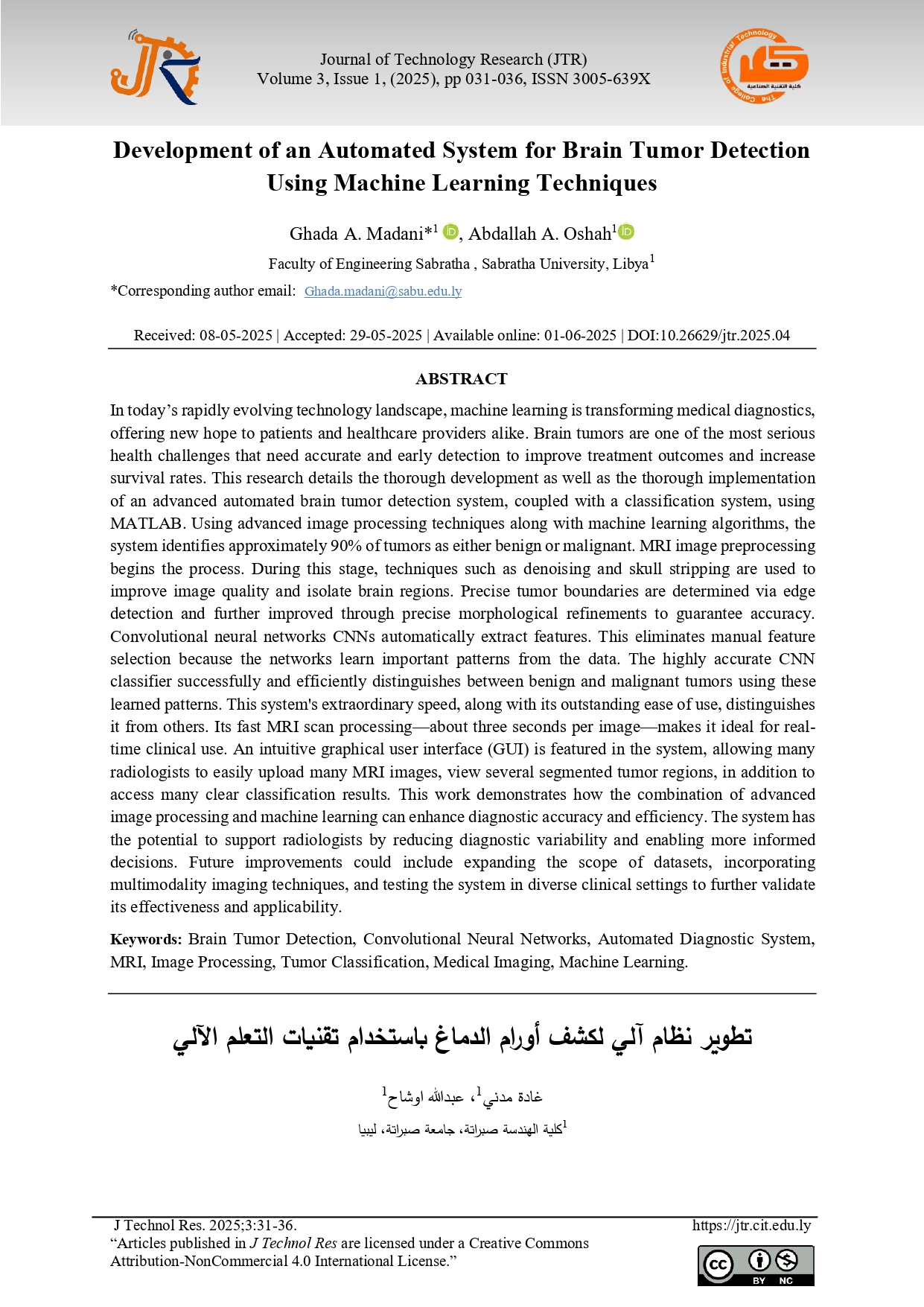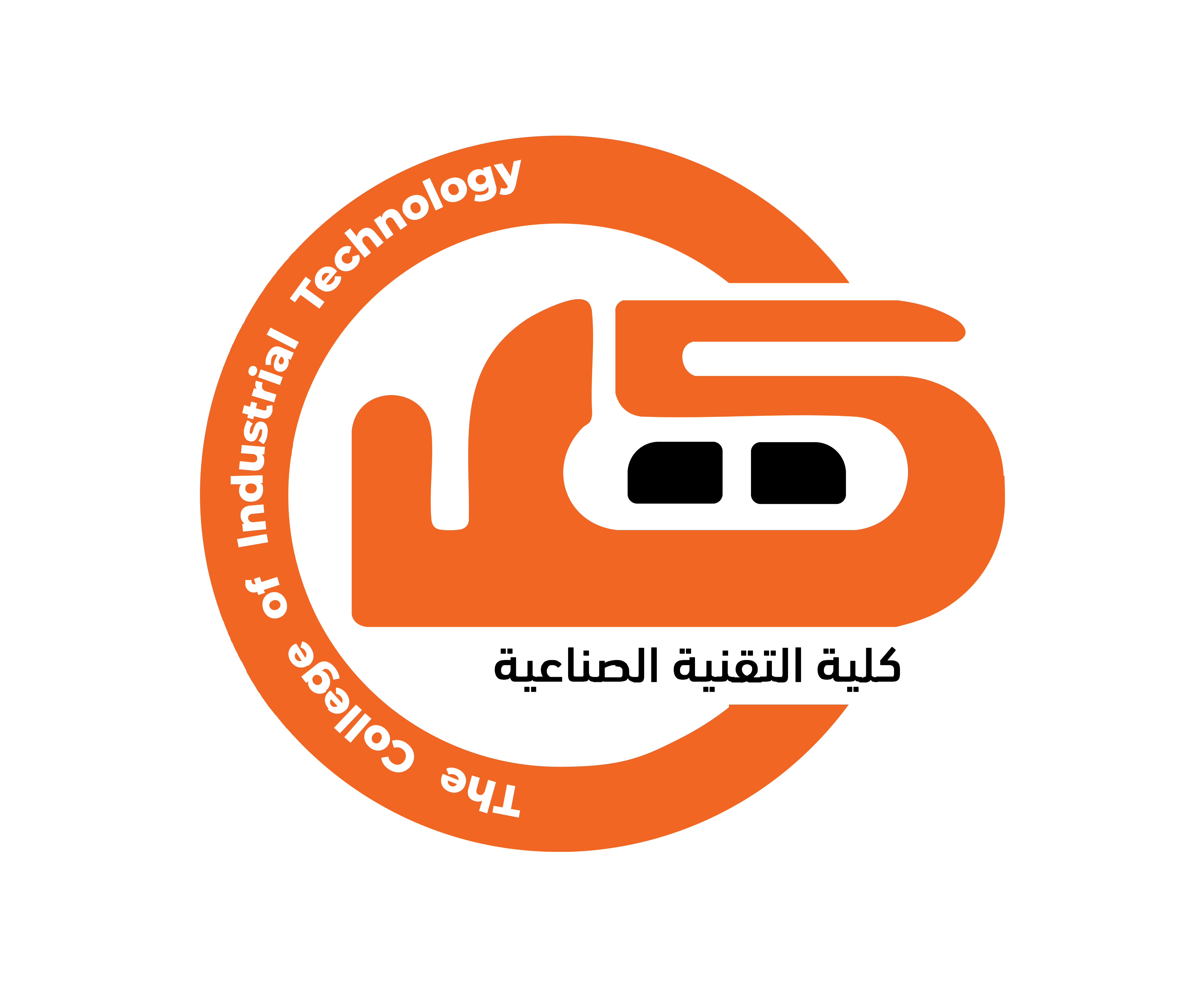Development of an Automated System for Brain Tumor Detection Using Machine Learning Techniques
DOI:
https://doi.org/10.26629/jtr.2025.04Keywords:
Brain Tumor Detection, Convolutional Neural Networks, Automated Diagnostic System, MRI, Image Processing, Tumor Classification, Medical Imaging, Machine Learning.Abstract
In today’s rapidly evolving technology landscape, machine learning is transforming medical diagnostics, offering new hope to patients and healthcare providers alike. Brain tumors are one of the most serious health challenges that need accurate and early detection to improve treatment outcomes and increase survival rates. This research details the thorough development as well as the thorough implementation of an advanced automated brain tumor detection system, coupled with a classification system, using MATLAB. Using advanced image processing techniques along with machine learning algorithms, the system identifies approximately 90% of tumors as either benign or malignant. MRI image preprocessing begins the process. During this stage, techniques such as denoising and skull stripping are used to improve image quality and isolate brain regions. Precise tumor boundaries are determined via edge detection and further improved through precise morphological refinements to guarantee accuracy. Convolutional neural networks CNNs automatically extract features. This eliminates manual feature selection because the networks learn important patterns from the data. The highly accurate CNN classifier successfully and efficiently distinguishes between benign and malignant tumors using these learned patterns. This system's extraordinary speed, along with its outstanding ease of use, distinguishes it from others. Its fast MRI scan processing—about three seconds per image—makes it ideal for real-time clinical use. An intuitive graphical user interface (GUI) is featured in the system, allowing many radiologists to easily upload many MRI images, view several segmented tumor regions, in addition to access many clear classification results. This work demonstrates how the combination of advanced image processing and machine learning can enhance diagnostic accuracy and efficiency. The system has the potential to support radiologists by reducing diagnostic variability and enabling more informed decisions. Future improvements could include expanding the scope of datasets, incorporating multimodality imaging techniques, and testing the system in diverse clinical settings to further validate its effectiveness and applicability.
Downloads

Downloads
Published
Issue
Section
License

This work is licensed under a Creative Commons Attribution-NonCommercial 4.0 International License.














